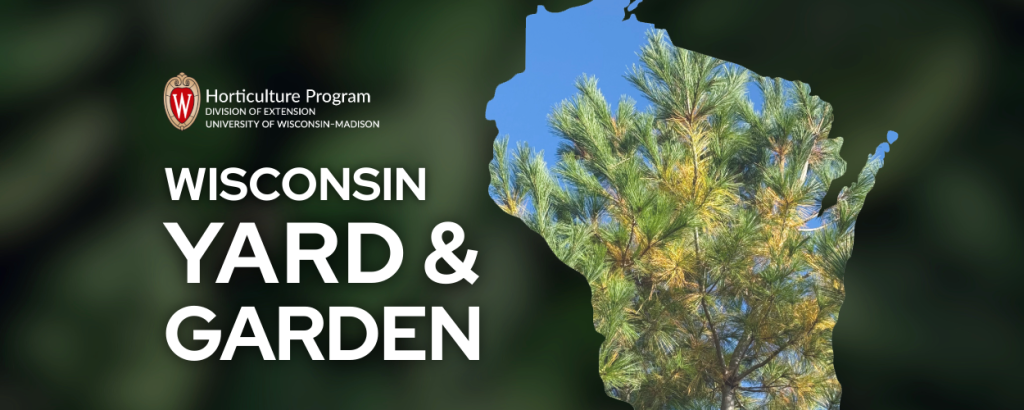
Even though we call them evergreens, needle conifers such as pines, spruce, and fir do not retain their needles forever. These trees will drop older needles located toward the center of the tree, typically in fall. Oftentimes older needles may turn yellow and brown all at once, giving the (incorrect) impression something is terribly wrong with the tree.
The most visible example occurring right now across Wisconsin are white pines. In a noticeably brief period, trees go from entirely green to showing lots of bright yellow needles, but with green needles still present. It can look alarming. Look closer, however, and you will notice an abrupt change from innermost yellow to green further out on branches.
Seeing the abrupt change from yellow to green as you progress outwards along the branch is good news. These are the older needles being shed prior to winter, and they are replaced next spring with a new set of green needles. Known as seasonal needle drop, this is perfectly normal and not cause for alarm. No disease or insect infestation to worry about.
Some years needle drop is more attention-getting than others and is not limited to white pine. Austrian, red, and Scots pines often show more brown needles rather than yellow initially, but the abrupt boundary between green and brown is still present. Likewise with arborvitae. Spruces and fir tend to retain needles longer; thus, the striking change is not usually seen.
As we advance into fall, an even more eye-catching color change will be on deciduous conifers, most notably tamarack or larch. Entire trees turn yellow, rust, and brown since these trees shed all their needles in fall and are needleless in winter. Tamaracks are most prevalent growing wild in lowland areas in northern and central Wisconsin. How vivid yellow will vary from year to year, as is the case with deciduous broadleaf trees like maples and oaks. Other deciduous conifers found in some Wisconsin landscapes turning quite colorful prior to total fall needle drop include bald cypress and dawn redwood.
Unfortunately, not all needle browning is normal, as insects, disease, and environmental issues with the site may also be involved. The abrupt change from green to brown or yellow is not usually present. Instead, it may be the opposite, with new growth turning off-color. Entire branches may be affected, or just lower branches may be showing issues. The problem may show anytime during the season, rather than just here in fall.
If you suspect tree problems, consider consulting the UW Plant Disease or Insect Diagnostic labs or submit plant health questions through our Ask Your Gardening Question form.

About the Author
Bruce Spangenberg is a Horticulture Outreach Specialist with UW-Madison Division of Extension. Get answers to your lawn, landscape and garden questions anytime at “Ask Your Gardening Question.”




